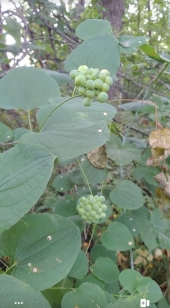Vegetables:
Tomato. Besides actually cleaning, drying, labeling, and storing seeds, I have a lot of success just tossing the rotten ones where I want them next spring.
Peppers. Two sweet grilling type, and cayenne and poblano.
Beans. We eat and freeze a ridiculous amount of them as green beans, but I leave an equal amount on the vine for dry beans and next year’s seeds. Except for a yellow wax bush bean that I have been saving and growing for years, all of my others are meant to be harvested after the beans have fully grown inside the pods. That’s where the protein is. So pick as they swell out for green beans, or let dry for dry beans. And seeds for next year.
Carrot. One or two overwintered and allowed to flower makes a LOT of seed.
Amaranth.
Kale and rapini broccoli, turnips, etc. Again, leave a couple to overwinter and flower, and I get more seed out of those long green pods than I’ll ever use. Well, they do like to be seeded heavily and way more crowded than you’d think, so I guess I’ll use them.
Onion. I cut the heads off before they start dropping seeds, and just let them dry in a tub.
Squashes.
Bronze fennel and parsley, and dill. Dammit! I do not need dill and fennel seeds to plant! They volunteer like crazy. Shoot me if I intentionally plant more dill.
Fennel seed is a delicious spice, but hoo boy ~ cleaning and winnowing seems endless.
Cilantro. I keep at least one gallon of seeds on hand because I just keep planting it every couple of weeks so I can usually find some young and tender for eating. Once they bolt, they become breeding stock. Great plant to cram in between pepper and tomato plants.
Garlic. Well, yeah😉 But cloning using the biggest bulbs, not true seed.
Flowers:
Coneflower
Bee Balm
Prairie aster
Hollyhock
Columbine
Phlox
Yarrow
Black eyed susan
Native prairie grasses:
Big Indian Grass
Switchgrass
Side Oats Grama
Canadian Wild Rye
Big and Little Bluestem
And some I have not IDed yet.
Trees:
Black Walnut
Red Oak
Shagbark Hickory
Sugar Maple
Redbud
Saving seeds is addicting. And rewarding. I have been greatly helped by the book about it that my wife got me for Christmas a few years ago. If for nothing more than knowing which need stratification.










